Potřebujeme váš souhlas k využití jednotlivých dat, aby se vám mimo jiné mohly ukazovat informace týkající se vašich zájmů. Souhlas udělíte kliknutím na tlačítko „OK“.
ASTM E423-71(2014)
Standard Test Method for Normal Spectral Emittance at Elevated Temperatures of Nonconducting Specimens
Automaticky přeložený název:
Standardní zkušební metoda pro normální spektrální emisivity při zvýšené teplotě nevodivé vzorků
NORMA vydána dne 1.4.2014
Informace o normě:
Označení normy: ASTM E423-71(2014)
Poznámka: NEPLATNÁ
Datum vydání normy: 1.4.2014
Kód zboží: NS-46736
Počet stran: 9
Přibližná hmotnost: 27 g (0.06 liber)
Země: Americká technická norma
Kategorie: Technické normy ASTM
Kategorie - podobné normy:
Materiály pro letectví a kosmické dopravní prostředky obecně
Anotace textu normy ASTM E423-71(2014) :
Keywords:
emittance, infrared emittance, material radiative property, radiative heat transfer, spacecraft thermal control, spectral normal emittance, thermal radiation, ICS Number Code 49.025.01 (Materials for aerospace construction in general)
Doplňující informace
| Significance and Use | ||
|
5.1 The significant features are typified by a discussion of the limitations of the technique. With the description and arrangement given in the following portions of this test method, the instrument will record directly the normal spectral emittance of a specimen. However, the following conditions must be met within acceptable tolerance, or corrections must be made for the specified conditions. 5.1.1 The effective temperatures of the specimen and blackbody must be within 1 K of each other. Practical limitations arise, however, because the temperature uniformities are often not better than a few kelvins. 5.1.2 The optical path length in the two beams must be equal, or, preferably, the instrument should operate in a nonabsorbing atmosphere, in order to eliminate the effects of differential atmospheric absorption in the two beams. Measurements in air are in many cases important, and will not necessarily give the same results as in a vacuum, thus the equality of the optical paths for dual-beam instruments becomes very critical. 5.1.3 Front-surface mirror optics
must be used throughout, except for the prism in prism
monochromators, and it should be emphasized that equivalent optical
elements must be used in the two beams in order to reduce and
balance attenuation of the beams by absorption in the optical
elements. It is recommended that optical surfaces be free of
SiO5.1.4 The source and field apertures
of the two beams must be equal in order to ensure that radiant flux
in the two beams compared by the apparatus will pertain to equal
areas of the sources and equal solid angles of emission. In some
cases it may be desirable to define the solid angle of the source
and sample when comparing alternative measurement techniques.
5.1.5 The response of the detector-amplifier system must vary linearly with the incident radiant flux, or must be calibrated for linearity, and corrections made for observed deviations from linearity. |
||
| 1. Scope | ||
|
1.1 This test method describes an accurate technique for measuring the normal spectral emittance of electrically nonconducting materials in the temperature range from 1000 to 1800 K, and at wavelengths from 1 to 35 μm. It is particularly suitable for measuring the normal spectral emittance of materials such as ceramic oxides, which have relatively low thermal conductivity and are translucent to appreciable depths (several millimetres) below the surface, but which become essentially opaque at thicknesses of 10 mm or less. 1.2 This test method requires expensive equipment and rather elaborate precautions, but produces data that are accurate to within a few percent. It is particularly suitable for research laboratories, where the highest precision and accuracy are desired, and is not recommended for routine production or acceptance testing. Because of its high accuracy, this test method may be used as a reference method to be applied to production and acceptance testing in case of dispute. 1.3 This test method requires the use of a specific specimen size and configuration, and a specific heating and viewing technique. The design details of the critical specimen furnace are presented in Ref (1),2 and the use of a furnace of this design is necessary to comply with this test method. The transfer optics and spectrophotometer are discussed in general terms. 1.4 The values stated in SI units are to be regarded as standard. No other units of measurement are included in this standard. 1.5 This standard does not purport to address all of the safety concerns, if any, associated with its use. It is the responsibility of the user of this standard to establish appropriate safety and health practices and determine the applicability of regulatory limitations prior to use. |
||
| 2. Referenced Documents | ||
|
Podobné normy:
Historická
1.4.2008
Historická
1.11.2012
Historická
1.11.2012
Historická
1.4.2009
Historická
1.4.2012
Historická
1.12.2011
Doporučujeme:
Aktualizace technických norem
Chcete mít jistotu, že používáte pouze platné technické normy?
Nabízíme Vám řešení, které Vám zajistí měsíční přehled o aktuálnosti norem, které používáte.
Chcete vědět více informací? Podívejte se na tuto stránku.


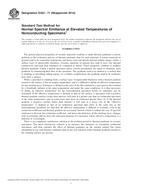
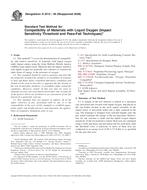 ASTM D2512-95(2008)..
ASTM D2512-95(2008)..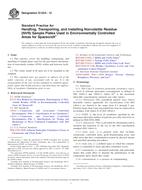 ASTM E1234-12
ASTM E1234-12 ASTM E1235-12
ASTM E1235-12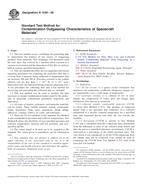 ASTM E1559-09
ASTM E1559-09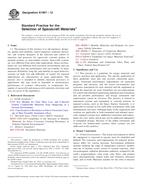 ASTM E1997-12
ASTM E1997-12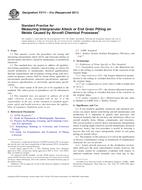 ASTM F2111-01a(2011)..
ASTM F2111-01a(2011)..
 Cookies
Cookies
